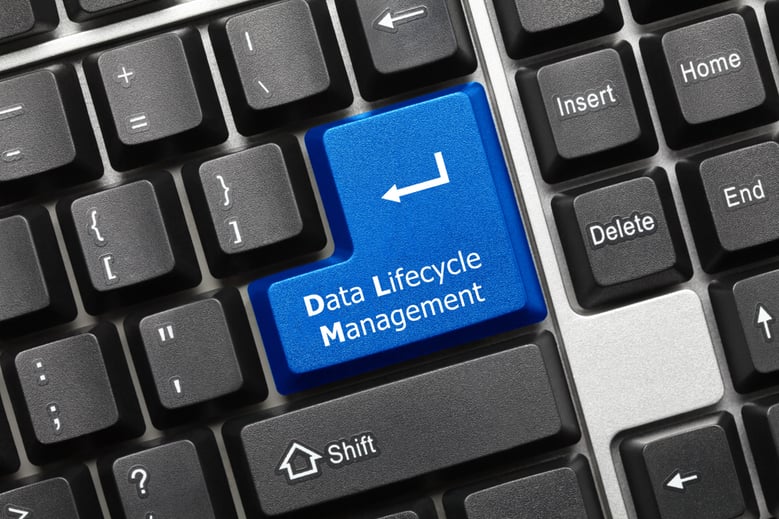
Unlocking Data Audience Classification
In the digital age, data should be considered the 'new oil,' a valuable asset to any organization. But, like oil, data must be classified, secured, and managed effectively to maximise its potential. This blog will delve into the concept of 'data audience classification,' a crucial step in data security and management.
The term may sound technical, but it's quite straightforward: classifying data based on who needs to access it. We'll explore the different classifications, such as public, company-wide, project-specific, and personal data, examining how to protect and manage each type.
By the end of this blog, you'll have a solid understanding of data audience classification and why it's essential for your organisation. Stick around as we unlock this concept, offering best practices to secure and manage your data in diverse contexts.
Understanding Different Data Audience Classification
Before we delve into data protection measures, it's vital to understand the different types of data audience classification.
- Public Data: As the name suggests, it is information that's freely accessible to the public. This could include your company's website data, such as contact information, product descriptions, blog or authorised social media posts. While this data is shared widely, it's still important to manage it properly to ensure consistency and accuracy.
- Company-Wide Data: Refers to information accessible by everyone within your organisation. It typically includes internal communications, employee directories, company policies and in some organisations, the company Intranet. Despite being accessible to all staff, this data is sensitive and must be kept secure within the company.
- Workgroup/Project-Specific Data: Workgroup or project-specific data is information only available to a select group working on a particular project or within a specific department. This data is often highly specialised and sensitive, requiring stringent security measures.
- Personal Data: Lastly, personal data pertains to a specific individual, such as an employee's contact details, payroll information, performance reviews and user metadata. Given its sensitive nature, this data must be handled carefully, adhering to data protection laws, privacy considerations and retention policies.
Understanding these classifications is the first step to mastering data audience classification. Each data type has different characteristics and requires different management and security practices. By grasping these differences, organisations can better protect and manage their data, ensuring it's used effectively and responsibly.
Best Practices for Data Protection in Each Classification
Now that we've classified our data, how do we ensure it's well-protected? Let's explore the best practices for securing each type of data.
Public Data Protection: Despite being open to the public, this data must maintain integrity and accuracy. Regular audits, strong website security measures, and data quality monitoring can help ensure this.
Securing Company-Wide Data: Since this data is accessible to all employees, it's important to have robust access controls, secured approval and publishing channels, and regularly scheduled data protection training for all staff members.
Workgroup/Project-Specific Data Safety: This data is limited to specific teams or projects. Strict access controls and storage policies are key. Additionally, regular data reviews can help detect any potential security issues, and data encryption at rest is strongly recommended.
Personal Data Protection: With high sensitivity, personal data requires stringent security measures. These include strong access controls, data anonymisation where appropriate, compliance with data protection regulations and well-defined retention policies covering both engaged and off-boarded entities.
Understanding these best practices for data audience classification can greatly enhance your data security strategy. As every type of data has unique protection needs, these practices are vital in maintaining your data's confidentiality, integrity, and availability.
Data Lifecycle Management in Different Data Classifications

We'll now tackle data lifecycle management with data protection practices in place. This involves overseeing data from creation to deletion, which differs across classifications.
- Public Data Lifecycle: Public data needs constant updates to stay relevant. This requires regular review and retirement of outdated content, ensuring only accurate and timely information is available.
- Company-Wide Data Lifecycle: Effective management involves routine updates, outdated archival data, and the disposal of unnecessary information. This reduces clutter and promotes efficient data usage.
- Workgroup/Project-Specific Data Lifecycle: These data sets often have a shorter lifespan due to project timelines. It's crucial to archive project data after completion for future reference and purge it when it's no longer needed.
- Personal Data Lifecycle: Privacy regulations demand that personal data is only kept as long as necessary. This means implementing strict data retention policies and ensuring proper data disposal practices.
In mastering data audience classification, understanding how to manage data throughout its lifecycle is key. This ensures that data remains secure, usable, and compliant with regulations.
Data audience classification is a mighty tool in our tech-driven world, central to robust data security and efficient management.
Throughout this discussion, we've unlocked its key facets, exploring the nuances of public, company-wide, workgroup-specific, and personal data. As we've seen, each category requires unique security measures and lifecycle management practices, essential for maintaining data integrity and usability.
The takeaway? Grasping data audience classification isn't just beneficial—it's crucial.
It helps safeguard data, enhance workflow efficiency, and build stakeholder trust. It equips organisations to effectively navigate the increasingly complex data landscape, ultimately turning information into a powerful resource rather than a potential risk.



